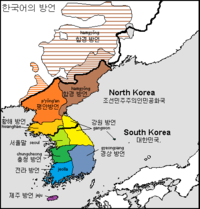The geographically proximate languages of Japanese (part of the Japonic languages) and Korean (part of the Koreanic languages) share considerable similarity in syntactic and morphological typology while having a small number of lexical resemblances. Observing the said similarities and probable history of Korean influence on Japanese culture, linguists have formulated different theories proposing a genetic relationship between them,[1][2][3][4][5][6][7][8] though these studies either lack conclusive evidence or were subsets of theories that have largely been discredited (like versions of the well-known Altaic hypothesis that mainly attempted to group the Turkic, Mongolian and Tungusic languages together).[9][10][11][12] There has been new research which has revived the possibility of a genealogical link, such as the Transeurasian hypothesis (a neo-Altaic proposal) by Robbeets et al., supported by computational linguistics and archaeological evidence, but this view has received significant criticism as well.[13][14]
Korean and Japanese have very different native scripts (Hangul and kana, respectively), although they both make use of Chinese characters to some extent; Kanji still are a core part of modern Japanese orthography, while Hanja were historically used to write Korean. Today, Hanja are only used in South Korea for limited academic, legal, media, stylistic and disambiguation purposes and are not used at all in North Korea. Although both Hangul and the two modern kana systems (katakana and hiragana) show syllable/mora boundaries, Hangul syllable blocks break down into a featural alphabet, while the kana are essentially pure syllabaries.
- ^ Andrew Logie (November 22, 2013). "Are Korean and Japanese related? The Altaic hypothesis continued". Koreanology. Retrieved February 17, 2016.
- ^ Kornicki, Peter. Aston, Cambridge and Korea Archived May 29, 2008, at the Wayback Machine
- ^ Poppe 1965:137
- ^ Martin, Samuel (1990).
- ^ Whitman, John (1985).
- ^ E. Riley, Barbara (2004).
- ^ Starostin, Sergei (Moscow, 1991). The Altaic Problem and the Origins of the Japanese Language.
- ^ Georg et al. 1999:72, 74
- ^ "While 'Altaic' is repeated in encyclopedias and handbooks most specialists in these languages no longer believe that the three traditional supposed Altaic groups, Turkic, Mongolian and Tungusic, are related." Lyle Campbell & Mauricio J. Mixco, A Glossary of Historical Linguistics (2007, University of Utah Press), pg. 7.
- ^ "When cognates proved not to be valid, Altaic was abandoned, and the received view now is that Turkic, Mongolian, and Tungusic are unrelated." Johanna Nichols, Linguistic Diversity in Space and Time (1992, Chicago), pg. 4.
- ^ "Careful examination indicates that the established families, Turkic, Mongolian, and Tungusic, form a linguistic area (called Altaic)...Sufficient criteria have not been given that would justify talking of a genetic relationship here." R.M.W. Dixon, The Rise and Fall of Languages (1997, Cambridge), pg. 32.
- ^ "...[T]his selection of features does not provide good evidence for common descent" and "we can observe convergence rather than divergence between Turkic and Mongolic languages--a pattern than is easily explainable by borrowing and diffusion rather than common descent", Asya Pereltsvaig, Languages of the World, An Introduction (2012, Cambridge) has a good discussion of the Altaic hypothesis (pp. 211-216).
- ^ Robbeets, Martine and Bouckaert, Remco. Bayesian phylolinguistics reveals the internal structure of the Transeurasian family Archived July 27, 2020, at the Wayback Machine, Robbeets, Martine et al. 2021 Triangulation supports agricultural spread of the Transeurasian languages, Nature 599, 616–621
- ^ Tian, Zheng; Tao, Yuxin; Zhu, Kongyang; Jacques, Guillaume; Ryder, Robin J.; de la Fuente, José Andrés Alonso; Antonov, Anton; Xia, Ziyang; Zhang, Yuxuan; Ji, Xiaoyan; Ren, Xiaoying; He, Guanglin; Guo, Jianxin; Wang, Rui; Yang, Xiaomin; Zhao, Jing; Xu, Dan; Gray, Russell D.; Zhang, Menghan; Wen, Shaoqing; Wang, Chuan-Chao; Pellard, Thomas (June 12, 2022), Triangulation fails when neither linguistic, genetic, nor archaeological data support the Transeurasian narrative, Cold Spring Harbor Laboratory, doi:10.1101/2022.06.09.495471, S2CID 249649524
© MMXXIII Rich X Search. We shall prevail. All rights reserved. Rich X Search


